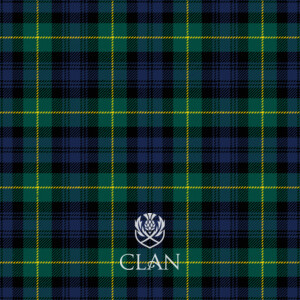
Clan Gordon
BYDAND (ABIDING)
Clan Gordon originate from the Scottish Borders, but became established in Aberdeenshire. The position of Earl of Huntly, one of the most famous in Scottish history, was created for Alexander Gordon in 1449.
By the 16th century the Gordons were a powerful and influential clan. The 4th Earl of Huntly gained the nickname "Cock o' the North" for his lavish receptions, a name which is still used for the current clan chief. The Gordons were advisors to Mary of Guise when she ruled in the absence of Mary Queen of Scots.
The Gordon clan motto is "Bydand" (Remaining) and the clan crest is a buck's head.
Scottish History
of Clan Gordon
In the beginning...
What’s in a name? In the case of Gordon, its meaning and origin are far from clear.
Some say it derives from a Berwickshire placename – ‘gor-dun’, meaning hill fort – while according to other accounts the clan’s ancestor came from Gourdon in France around the time of the Norman Conquest.
A third, and more fanciful, theory reaches back to a city of Macedonia called Gordonia.
Whatever the truth, the Berwickshire connection certainly becomes clearer as written accounts begin in the twelfth century, showing that between 1150 and 1160 one Richard de Gordon granted land to the monks of Kelso.
And the clan’s story truly comes to life with the arrival of Richard’s great-great-grandson, Sir Adam de Gordon.
Like many ancient and noble families, the Gordons’ fortune hinged on being on the right side in times of strife. When the Scots lost the battle of Falkirk in 1298 and William Wallace was taken off by the English to his eventual execution, the Guardianship of Scotland fell to two men - Robert the Bruce and John Comyn.
Almost inevitably they fell out. Their animosity continued through Edward I’s conquest of Scotland, and culminated in 1306 when Bruce cut down John ‘The Red’ Comyn with his sword before the high altar of Greyfriars Kirk in Dumfries. Bruce was excommunicated and outlawed for this sacriligious act, and civil war followed.
Adam de Gordon had been one of Comyn’s supporters and joined Edward of England in vengeful pursuit of Bruce. But after Edward’s death, an English Border commander made the mistake of plundering Gordon lands in Berwickshire and even imprisoning Adam, who promptly switched sides, pleading with the Pope to end Bruce’s excommunication and serving Bruce faithfully after he became king.
Later, in 1320, Adam was to claim a glittering place in the nation’s history by carrying to Rome the historic Declaration of Arbroath, which sought the Pope’s support in establishing the independence of Scotland from its southern neighbour.
The move north
Adam de Gordon’s loyalty to Robert the Bruce brought him rich rewards in the shape of extensive estates in Strathbogie in Aberdeenshire.
These had formerly been owned by David of Strathbolgyn, chief of Clan MacDuff, who had turned against the Scottish king just before Bannockburn.
Sir Adam gave his new lands the name of Huntly, after a village in Gordon parish, and is believed to have married a daughter of Strathbolgyn.
Sadly, these were troubled times and the family’s ascendancy brought little relief from the savagery of war. Sir Adam himself was killed in 1333 while fighting the English at the battle of Halidon Hill - ironically in Berwickshire.
In 1376 his great-grandson, Sir John Gordon, had the family’s ownership of Strathbogie confirmed in a charter from King Robert II but was killed at the battle of Otterburn in 1388, when the Scots defeated an army led by Henry ‘Hotspur’ Percy, son of the earl of Northumberland. John’s son Adam also fell in battle at Homildon in 1402.
With Adam’s death, the old Gordon line continued through the Gordons of Lochinvar in Galloway, who later became the Viscounts of Kenmure.
However, the chieftainship was passed on through Adam’s Elizabeth, whose husband, Sir Alexander Seton, is named as Lord Gordon in a document of 1429 and whose son Alexander became Earl of Huntly in 1455.
This line continued the Gordons’ position as one of Scotland’s leading families for nearly 400 years, with the 6th Earl becoming Marquis in 1599 and the 9th Earl created Duke in 1684.
However, the dukedom became extinct in 1836 when the 5th Duke died without a male heir, and a distant cousin succeeded as Earl and Marquis.
So prominent was the family that in their day the Dukes of Gordon were called ‘The Cock of the North’. Their most ancient title, however, was ‘Gudeman of the Bog’ after the Bog-of-Gight in the Banffshire parish of Bellie.
Family History Mini Book
We hope you enjoyed reading this excerpt from this mini book on the Scottish history of the Gordon family.
You can buy the full book for only132 Clan Gordon
Tartan Products
The Crests
of Clan Gordon












































































